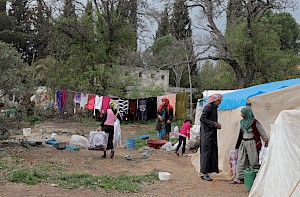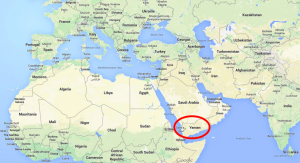Hunger and migration are interconnected
December 07, 2021Originally published on statesman.com
At the same time that President Biden announced making a $10 billion commitment to tackle hunger and malnutrition, the administration was expelling more than 12,000 migrants who had converged, hungry and desperate, in Del Rio.
As the migration crisis shows, tackling hunger sustainably is more complex than just distributing food parcels. It requires strengthening rural areas all over the world that support farmers and provide them livelihoods, improving the conditions that lead to migration, often first to cities and eventually overseas.
The fact is that hunger and migration are secondary consequences of the systemic failure to invest in small-scale farmers and rural communities like those in the Northern Triangle of El Salvador, Guatemala and Honduras, from where more than two million people are estimated to have fled since 2014.
Half of Biden’s latest package – $5 billion in total – has been allocated for overseas support in countries like these. It is critical that USAID direct these funds at building these rural economies holistically, including support that generates greater and more consistent local incomes and opportunities. Otherwise, both malnutrition and migration will continue.
At the recent UN Food Systems Summit, governments and donors recognised the need to commit more funding toward addressing these interconnected issues. They now must ensure that these pledges - which included $922 million from the Gates Foundation for nutrition - invest with these broader outcomes in mind.
Firstly, the goal should be to grow livelihoods, not just food. Agriculture offers families a way to not only feed themselves but also to generate income, giving them the collateral to afford health care and education, and to cope with the unpredictable, like natural disasters or political instability.
In El Salvador, for example, farmers accessing formalised networks and markets through Acceso saw incomes increase by more than 250 per cent in 2020 compared to 2017 as a result of increased yields and market access. Subsequently, three-quarters of farmers surveyed said fewer young people were moving to cities and urban areas, where so many would-be migrants begin their journeys.
And yet there is more to be done. The economic impacts of COVID-19 contributed to 124 million more people falling into poverty, and around 600 million people are expected to still live in poverty by 2030 unless urgent action is taken.
Secondly, these farmers need support to trade what they grow locally. A decade ago, supermarkets in El Salvador were filled with imported goods because of critical gaps in the domestic food and agribusiness sector.
Since Acceso El Salvador was founded, imports by the Salvadoran supermarket chain Super Selectos have fallen from 90 per cent to less than 50 per cent thanks to a model that connects farmers to these formalized local retail markets through buyers and retailers.
Lastly, funding should specifically support the agricultural sector to drive broader economic growth within a country. A thriving agricultural sector is the cornerstone of many nations’ GDP, helping stimulate investment and trade while contributing to greater self-sufficiency and stability in the long term.
Today, two-thirds of young children do not eat the minimum diverse diets required to grow healthily. Besides the obvious issue of malnutrition itself, this also has ripple effects in terms of their ability to learn and to work productively as adults.
The Biden administration’s financial commitment to addressing hunger and malnutrition is an important first step, but it could have even greater impact in the shortest possible time – by channelling funds into developing agricultural markets.
The agricultural sector is one of few that provides both a basic human right and the opportunity to go beyond poverty alleviation for true social mobility that reduces irregular migration – when small-scale farmers are connected to productive and profitable markets. Surely, this is in everyone’s best interests, including the U.S.










